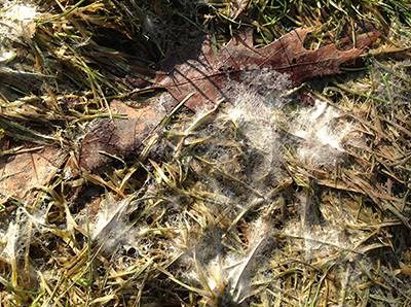After a long winter, nothing beats walking outside, basking in the sunshine and spotting the first blooming daffodil or forsythia.
As the snow melts and Jack Frost packs his bags, we can officially say spring is here. Now, the only thing left to do is clean up the mess Frost left behind.
Clean up your landscape after a snow-filled winter with these five simple tips from Shawn Fitzgerald, ISA-certified arborist, and Davey technical advisor.
- Pick up the leftovers. Remove any branches, leaves, and other natural debris knocked down by winter storms, and compost.
- Inspect trees and shrubs. Examine trees and shrubs for cracks, splits or breaks caused by heavy snowfall. Also, “Wait for leaf out to prune to ensure you don’t cut any live branches,” Fitzgerald suggests. See a worrisome crack or break? Schedule a tree check-up with a certified arborist.
- Spot and fix it. Walk around your home and yard. Repeat in a few weeks as some damage may not appear until leaf out. Look for:
- Crushed plant material. Check back to see if this plant recovers during spring.
 Brown spots in the grass. To fix, first, check if your soil temperature is 55 degrees Fahrenheit or higher. You can use a meat thermometer or call your local garden center. Then, Fitzgerald advises turning the ground to generate the seed to soil contact, which is key to germination. Finally, lightly rake grass seeds into the soil.
Brown spots in the grass. To fix, first, check if your soil temperature is 55 degrees Fahrenheit or higher. You can use a meat thermometer or call your local garden center. Then, Fitzgerald advises turning the ground to generate the seed to soil contact, which is key to germination. Finally, lightly rake grass seeds into the soil.- White, tan, or pink spots on the lawn – known as snow mold (pictured above, left). If spotted, Fitzgerald recommends you “rake and break.” Lightly rake the affected area to break up the molded, matted grass.
- Brown or crunchy spots on the lawn, around tree trunks or plant stems caused by salt damage. To remedy, gently rake away salt and wash from soil and roots. As the weather warms, pull back the damaged grass to see if new growth is emerging.
- Stop weeds before they start. “The trick to stopping weeds is to start early, and do it correctly,” Fitzgerald says. First, pull weeds by hand. Then, apply a pre-emergent herbicide at the start of spring, and apply again in 6 to 8 weeks. While pricey, this is worth the investment. If weeds come back later in the season, try a post-emergent herbicide and keep pulling those weeds.
- Resist the urge to mow. “Keep the lawn mower off as long as you can,” Fitzgerald recommends. The longer you wait to mow, the better your yard will look.






